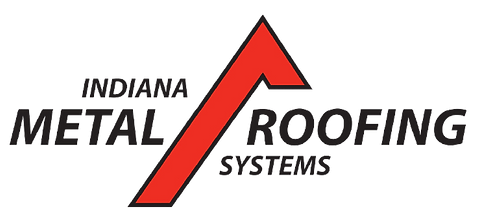Debunking Myths: The Truth About Metal Roofs and Heat Absorption
- Joseph Justice
- Dec 19, 2024
- 3 min read
Metal roofs have become increasingly popular for their durability, aesthetic appeal, and energy efficiency. However, several misconceptions still persist, particularly about heat absorption. In this article, we aim to clear up some of the most common myths and provide accurate insights into how metal roofs manage heat.
At Indiana Metal Roofing Systems, located in Fort Wayne, IN, we prioritize providing homeowners with precise and transparent information regarding roofing options. Our metal roofing systems are designed with the highest standards, ensuring that your home remains energy-efficient and comfortable year-round.

Myth 1: Metal Roofs Absorb More Heat Than Other Materials
One of the most pervasive myths is that metal roofs absorb and retain more heat compared to other roofing materials. In reality, metal roofs have high reflectivity, meaning they are better at reflecting solar radiation than traditional asphalt shingles. This high solar reflectivity allows metal roofs to deflect a significant amount of the sun’s rays, keeping your home cooler during hot months. This makes metal roofing ideal for homes in regions with high temperatures, especially when paired with reflective coatings.
Myth 2: All Metal Roofs Heat Up Equally
Not all metals are the same when it comes to heat conduction. Some metals, like copper, may conduct heat more than others, such as steel or aluminum. However, the specific type of metal used in roofing plays a critical role in determining heat absorption levels. Additionally, modern metal roofing systems often include coatings or finishes that reduce heat absorption. Lighter-colored metal roofs, for example, reflect more sunlight and remain cooler than darker-colored roofs.
Myth 3: Metal Roofs Retain Heat and Increase Indoor Temperatures
A common misconception is that metal roofs retain heat, making homes warmer during the summer. While it’s true that metal is a good conductor of heat, metal roofs actually dissipate heat faster than other materials like asphalt shingles. Asphalt shingles, for example, tend to absorb heat and hold onto it longer, contributing to elevated attic and indoor temperatures. In contrast, metal roofs release heat quickly, allowing homes to cool down faster once the sun sets.
Factors That Influence Heat Absorption in Metal Roofs
1. Roof Color
Roof color plays a significant role in heat absorption. Lighter-colored roofs, such as white or light gray, reflect more sunlight, whereas darker shades, like black or dark brown, absorb more heat. Choosing a light-colored metal roof can significantly reduce heat absorption and help keep your home cooler.
2. Insulation and Ventilation
Proper insulation and ventilation are key components in minimizing heat transfer from a metal roof into your home. Well-insulated roofing systems reduce heat penetration, while effective attic ventilation allows trapped heat to escape, maintaining a balanced indoor temperature. Advanced techniques like above sheathing ventilation (ASV) can further enhance your roof’s cooling capabilities by allowing air to flow between the metal sheathing and the insulation.
3. Coating Technology
Modern metal roofs often come with specialized coatings that reflect more heat. These reflective coatings, also known as cool roof coatings, are designed to improve the roof's overall energy efficiency. By deflecting UV rays, these coatings lower the surface temperature of the roof, making it a smart choice for homeowners looking to reduce energy consumption.
Benefits of Metal Roofs for Energy Efficiency
Metal roofs are not only durable and stylish, but they also offer substantial energy-saving benefits. Studies have shown that homes with metal roofs can save up to 25% on cooling costs during the summer months. This energy efficiency comes from metal roofs' ability to reflect heat and cool down faster, reducing the workload on air conditioning systems.
At Indiana Metal Roofing Systems, we pride ourselves on offering the best quality craftsmanship and materials, ensuring that your metal roof provides both aesthetic value and energy efficiency. Our A+ BBB rating and 5-star Google reviews demonstrate our commitment to customer satisfaction and long-lasting results.
FAQs
1. Do metal roofs make your house hotter in the summer?No, metal roofs can actually help keep your house cooler by reflecting sunlight and dissipating heat more efficiently than other materials like asphalt.
2. What is the best color for a metal roof in hot climates?Lighter colors, such as white, light gray, or silver, are best for reflecting heat and keeping your home cooler.
3. Do metal roofs require more maintenance than other types?Metal roofs typically require less maintenance than traditional roofs, as they are resistant to issues like mold, mildew, and cracking.
4. Are metal roofs more energy-efficient than asphalt shingles?Yes, metal roofs are generally more energy-efficient due to their reflective properties and ability to cool down quickly.
5. Can metal roofs reduce my energy bills?Yes, metal roofs can reduce energy bills by reflecting sunlight and lowering cooling costs, especially in warmer climates.
For more information on different types of shingles and their energy efficiency, you can read our article on Best Impact-Resistant Shingles for a Durable Roof.

